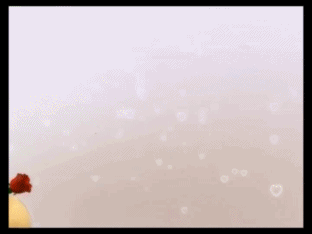
ดูผ่านๆอาจจะนึกว่าเป็นแค่ใบไม้ธรรมดาๆค่ะ แต่ถ้ามองให้ดีๆจะเห็นว่ามีตุ๊กแกซ่อนอยู่ ซึ่งนอกจากจะสามารถปรับสีผิวให้มีความกลมกลืนกับสภาพแวดล้อมได้แล้ว มันยังสามารถดัดหางให้เป็นเกลียวดูกลมกลืนเหมือนใบไม้แห้งจริงๆอีกด้วย
ไม่เหมือนกิ้งก่าคามิเลียนที่เปลี่ยนสีผิวเพื่อแสดงอารมณ์และเรียกร้องความสนใจค่ะ ตุ๊กแกบางพันธุ์จะเปลี่ยนภาพลักษณ์ตัวเองเพื่อซ่อนตัว ส่วนหนึ่งก็เป็นเรื่องของการป้องกันตัวจากการถูกล่า อีกส่วนก็เพื่อประโยชน์ในการล่าเหยื่อเองค่ะ
แต่ก็ไม่ใช่ตุ๊กแกทั้ง 2,000 ชนิดจะสามารถเปลี่ยนสีได้ทั้งหมดน่ะค่ะ อย่างไรก็ตาม พวกมันมีลักษณะพิเศษที่เหมือนกันคือการมีนิ้วเท้าพิเศษที่ช่วยให้สามารถเดินขึ้นเดินลงไปมาบนพื้นผิวแนวตั้งได้ค่ะ ซึ่งพื้นผิวอย่างเดียวที่ตุ๊กแกไม่สามารถเดินได้คือเทฟล่อน (Teflon) นั้นเอง นอกจากนี้ บางสายพันธุ์ตัวเมียยังสามารถทำได้แม้กระทั่งสืบพันธุ์โดยไม่ต้องอาศัยตัวผู้( parthenogenic ) หรือถ้าหางเกิดขาดไป ก็สามารถงอกออกมาใหม่ได้ค่ะ
ตุ๊กแกมีลักษณะพิเศษตรงที่เสียงร้องพวกของมันค่ะ คนไทยฟังแล้วเป็นคำว่า " ตุ๊กแก " แต่ฝรั่งเขาได้ยินเป็น " เก็กโค่( gecko ) " ค่ะ บางพันธุ์จะตัวเล็กมาก เล็กที่สุดมีความยาวประมาณ 16 มิลลิเมตรเองค่ะ แต่พันธุ์ที่ใหญ่ที่สุดคือ “ Delcourt's gecko ” ยาวประมาณ 60 เซนติเมตร แต่ตอนนี้พบได้แค่ร่างไร้วิญญาณเป็นสัตว์สตาฟที่ French museum น่ะค่ะ เพราะสูญพันธุ์ไปแล้ว
เรารวบรวมรูปการพรางตัวของเจ้าตุ๊กแกเหล่านี้ไว้เพียบเลยค่ะ มาลองเล่น Photo Hunt หาดูว่าเจ้ากิงก่ามันหลบอยู่ตรงไหนกันน่ะค่ะ ธรรมชาติเนี้ย น่าพิศวงจริงๆเลย ^^
Can you twig this is a lizard? Play Spot the Gecko in our series of pictures
By LAURA TOPHAM
At first glance, it looks like just another autumn leaf - but look closer at the picture and suddenly tiny feet and the shape of a lizard's head will begin to emerge from above the branch.
For this remarkable image shows not just brown leaves, but a carefully camouflaged leaf-tailed gecko blending in to its environment.
Here, it has taken on - with astounding accuracy - the shape and shading of the foliage in its native Madagascar after evolving to look like the natural surroundings in which it exists, right down to having notches on its tail that resemble a decaying leaf.
This will make you bug-eyed: A giant leaf-tailed gecko eyeballs people in Madagascar
Two examples of the northern leaf tailed gecko hiding in the tree in Australia. Unlike chameleons, which change colour to communicate and convey emotions, some geckos alter their appearance to make them hard to spot - partly as a means of defence, but also to allow them to catch prey
Unlike chameleons, which change colour to communicate and convey emotions, some geckos alter their appearance to make them hard to spot - partly as a means of defence, but also to allow them to catch prey. Chameleons want to be conspicuous; geckos want to hide.
The slow change in the body colour occurs when cells bearing differently coloured pigments beneath the lizard's transparent skin either expand or shrink.
Not all the 2,000 species of gecko, found in warm climates around the world, can change colour.
But they do possess the species' other qualities, such as self-cleaning toe pads that enable them to climb vertically or walk upside down. The only surface to which a gecko cannot stick is Teflon.
Turning over a new leaf: Down to the notches on its tail, this satanic leaf-tailed gecko has made itself part of the furniture in the Andasibe Mantadia National Park in Madagascar
The wrong end of the stick? This leaf-tailed gecko is perfectly suited to its woody perch in Madagascar Right, Bavay's giant gecko from the South Pacific
Spot the lizard: A well camouflaged gecko climbs a palm tree and (right) the hardest to spot: Here's a clue, its head is at the bottom
Some species are even parthenogenic, meaning the female can reproduce without a male. Others are able to re-grow their tail if it breaks off.
Geckos are unique among lizards, not for their skin, but for the way they chirp to interact with other geckos, producing the sound that inspired their name.
Most are small, with the tiniest measuring a mere 16mm.
The largest, Delcourt's gecko, is extinct - its existence is only known about thanks to one 60cm stuffed specimen in the basement of a French museum.
The soft-skinned lizards feed on insects. Instead of eyelids, they have a transparent membrane that they lick clean. This helps improve their disguise, as well as the way they can fold flat against a branch to avoid casting any shadow.
In fact, they are so difficult to see that more species are still being discovered.
If, however, they are noticed, geckos have a particularly unpleasant last line of defence: ejecting faeces and another foul-smelling substance onto their foe.
Take a leaf out my book: A gecko from Madagascar (left) and another Austrlian gecko (right) make themselves known to the camera
The northland green gecko from New Zeland is less discreet than others, but he makes up for it in luminosity











